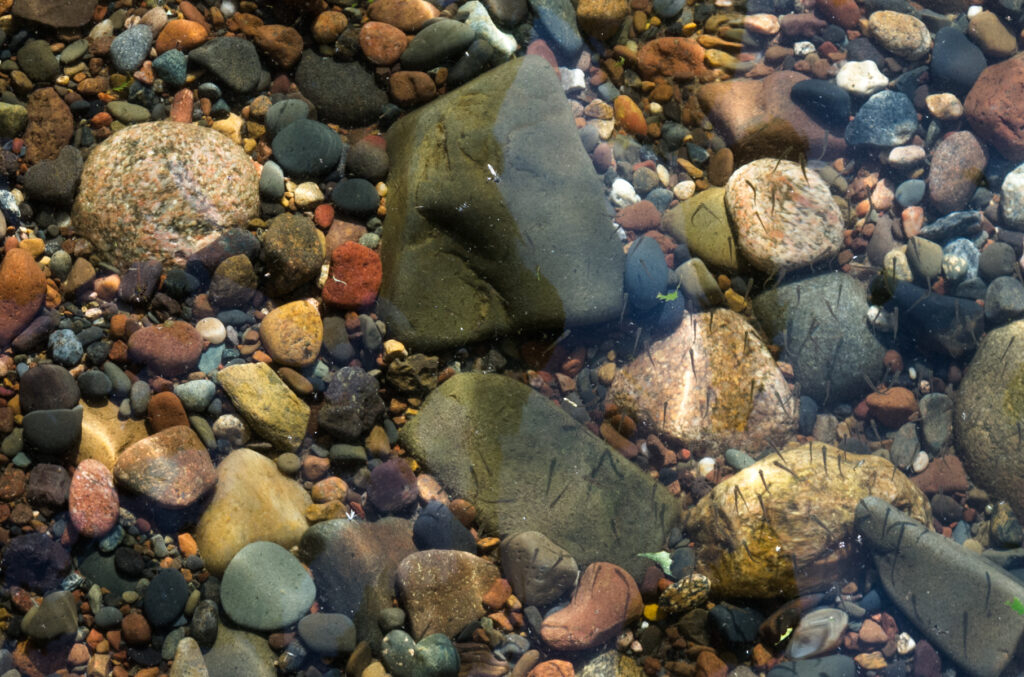Monitoring Watershed Health
Water quality studies of Mille Lacs Lake and its watershed have been conducted periodically since at least the early 1970s. These have been produced by several entities including the Mille Band of Ojibwe DNR, Minnesota DNR, Minnesota Pollution Control Agency, and the Mille Lacs Lake Watershed Management Group itself.

Findings and recommendations from these reports are the basis for MLLWMG’s work plan which addresses tactics to maintain and improve water quality in the watershed through water quality monitoring; public education; encouragement of landowner conservation efforts; and action by local government and agencies.
The Minnesota Pollution Control Agency is the primary resource for current data about Mille Lacs Lake and the Rum River Watershed of which it is a part. The selected reports below provide additional insight.
SELECTED REPORTS
Click title to download report PDF
Mille Lacs Lake Aggregated 12-HUC
May 2018, by the Minnesota Pollution Control Agency
Based on 2013 research, this nine-page document provides details on many of the streams and lakes in the Mille Lacs Lake watershed in addition to information on the big lake itself. Narrative discussions are accompanied by tables and maps that provide an overview of the conditions of the different water bodies along with strategies for improvement. A guide to MPCA research available on the MPCA website is provided plus maps of the entire Rum River Watershed and its sub-watersheds.
2013 Mille Lacs Lake Lakeshed Assessment
2013, by RMB Environmental Laboratories, Inc.
The 22-page Assessment provides a comprehensive summary of the physical characteristics of the watershed, monitoring data, and fisheries. The recommendations section says, “The management focus for Mille Lacs Lake should be to protect the current water quality and the lakeshed. Efforts should be focused on managing and/or decreasing the impact caused by additional development, including first and second tier development, and impervious surface area. Project ideas include enforcing county shoreline ordinances, smart development, shoreline restoration, rain gardens, and septic system maintenance.” These recommendations include a call for persistent monitoring.
2007 and 2008 Water Quality Study – Mille Lacs Lake Watershed Water Quality Analysis Project
2009, by Short Elliott Hendrickson Inc.
This study was commissioned by MLLWMG and funded by an MPCA Clean Water Legacy grant in 2007. The 89-page Report includes a summary of previous studies and reports of the watershed going back to the early 1970s. The Executive Summary said: “The current status of Mille Lacs Lake water quality is good. The lake water quality indicators are better than the large lake target levels reported by the MPCA. Water quality trends show better lake water quality from 2000-2008 than was found in the 1980s and 1990s.” The study’s recommendations were to continue monitoring and studying to pinpoint problem areas.
Mille Lacs Lake Water Quality Analysis Memo
2007, by Houston Engineering
The Mille Lacs Band of Ojibwe DNR hired Houston Engineering to summarize all available Mille Lacs data and also some of the Band’s data, two years after the start of Long Term Trend Analysis work in 2005. This seven-page report has served as a template for reporting to EPA since then. The Memo’s Discussion and Conclusion section provides a series of recommendations for monitoring and says: “It does generally appear that there are differences in the water quality between shallow and deep zones, as well as between different areas of the lake,” and: “It does appear that the health of Mille Lacs Lake has improved over time since the 1970s, based on the trophic status indicators of secchi disk depth, total phosphorus, and chlorophyll-a; however, upon closer inspection, it does appear that water quality is slightly declining since the mid-to-late 1990s. Continued monitoring is necessary to track the health of Mille Lacs Lake, with comparison to the baseline condition.”
Final Report and Recommendations of the Mille Lacs Lake Watershed Management Group: Phase I Clean Water Partnership Watershed Management Project
April, 2003, by The Osgood Group
This report is the outcome of a late 90s effort to establish direction for managing the Mille Lacs Lake watershed and was commissioned by MLLWMG early in its history. It is comprehensive in including lake geology, history, and socio-economic descriptions of the watershed as well as data about water quality that is provided with explanations that are helpful for the layperson. The 125-page report advises that attention needs to be given to managing phosphorous to prevent “phosphorous recycling” which could lead to significant degradation of the waters. (Download does not include appendices)
This foundational study establishes the basis for much of the work that MLLWMG has pursued since the early 2000s including its goal statement, “The water quality of Mille Lacs Lake will be preserved at its 2000-2001 levels through an ongoing program of advocacy, education, protective actions, planning and monitoring,” and these six management objectives:
1. Increase the awareness and knowledge of watershed residents, lakeshore owners, recreational users, resort owners, local elected officials and state regulators with regard to the need for lake and watershed protection.
2. MLLWMG must be effective advocates for the protection of Mille Lacs Lake.
3. Implement watershed protection to mitigate excessive phosphorus loading and offset the anticipated increases in nutrient inputs as well as other kinds of pollution.
4. Minimize future increases in non-point source pollution through appropriate local planning and zoning controls.
5. Implement an ongoing monitoring and evaluation program.
6. Provide program administration.
Learn More About How You Can Help Keep Mille Lacs Waters Clean
The following short articles from our Learn More page provide information about controlling nutrients, chloride, and more. Click a title to download a pdf.
Minnesota LakeBrowser Tool Provides Water Quality Data Captured by Satellite (December, 2021)
Help Reduce the Volume of Unregulated Chemical Pollutants in Our Waters (June, 2021)
Following the Phosphorus in the Fall (October, 2019)
Smart Salting Protects Minnesota Waters (February, 2019)
Don’t Let Your Septic System Freeze (December, 2018)
Managing a Healthy Septic System (February, 2018)
Smart Salting Tips (December, 2017)
